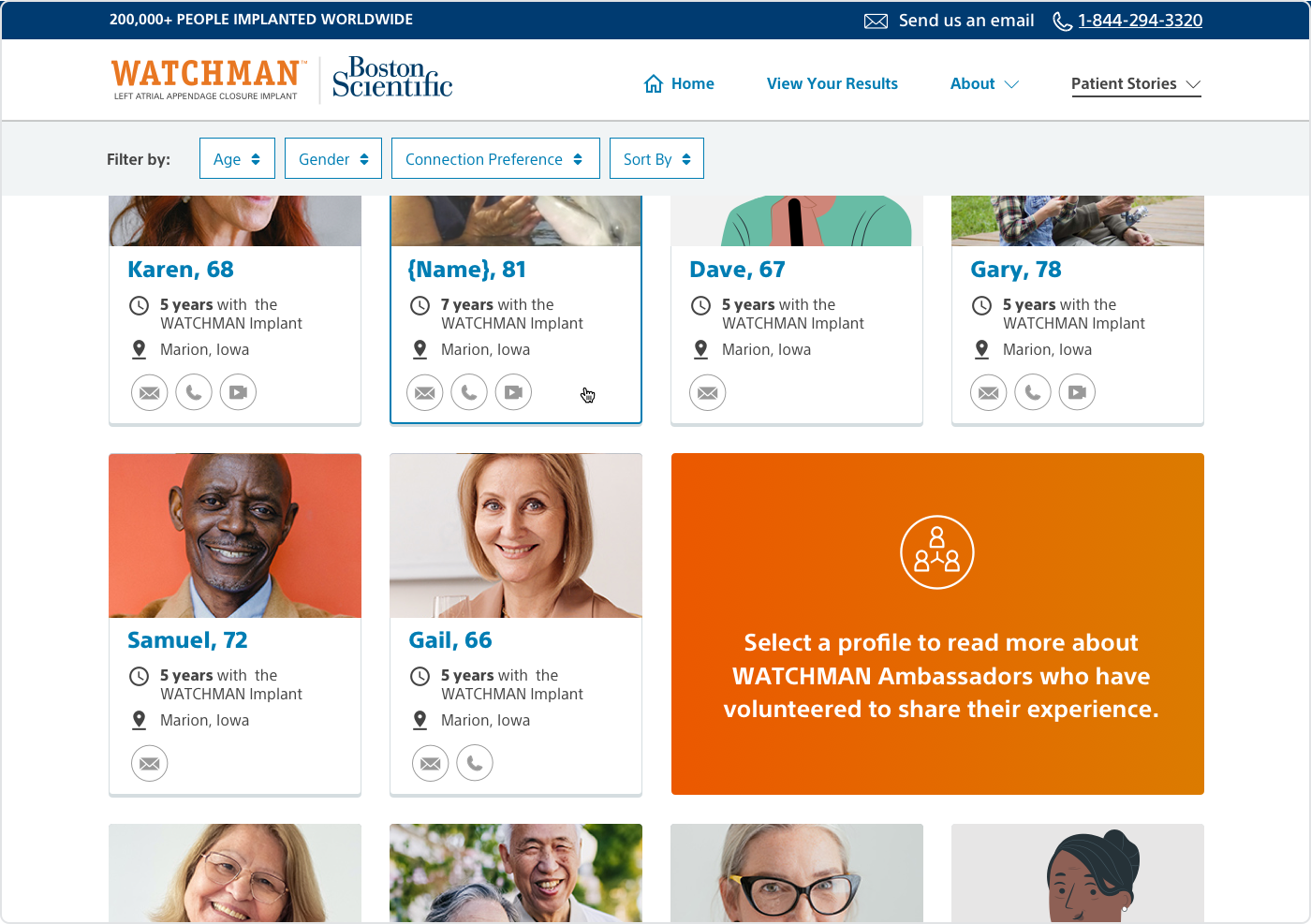WATCHMAN™ Ambassador Program
Boston Scientific’s WATCHMAN provides a viable option for patients with non-valvular AFib who seek an alternative to blood thinners. For individuals eager to explore WATCHMAN further, Boston Scientific has launched an ambassador program. This initiative fosters peer-to-peer connections, enabling prospective patients to glean insights from individuals who have already undergone the WATCHMAN procedure. The overarching goal of this endeavor is to enhance the administration of the program, presently reliant on phone-based interactions. Key areas of focus include discerning the preferred modes of engagement for interested parties seeking guidance from Ambassadors and delving deeper into information about WATCHMAN, while also evaluating the potential role of digital platforms in this process.
Credits:
UI / UX: Chelsea Price
Project Management: Kristen Keaveny
Research: Renee Range
To start, we closely observed 18 diverse user interviews to gain insight into various factors, including:
Would users be interested in talking with an ambassador?
How they might want to interact?
What matching / filtering criteria would they be interested in?
How quickly would they expect to talk to someone?
What would they want to find out from an ambassador? Etc.
From our interviews, we gathered a comprehensive list of features and content desired by our users.
Research
With our list of functionality in hand, we began creating user flows, ensuring a seamless connection between the front and backend work. We then worked through iterations of wireframes and design layouts for the authenticated and unauthenticated user, ambassadors and the call center.
User Flows, Wireframes & Ideation

Product Testing
We were able to thoroughly test our designs, ensuring that every aspect resonated with the user’s needs and expectations, which is imperative when creating a truly user-centered product — and the outcome was simply outstanding. As a result of the fantastic feedback received, we honed in on a few key areas that demanded refinement, shaping our designs to better align with the users' preferences and requirements.
Messaging and how it can help patients along in the decision making process
What layouts ensure CTAs are clearly shown and highlighted on each page to help users understand what actions they can take (phone, video call, messaging)
Increased authenticity: Multiple aspects that contributed to authenticity & trustworthiness to continue to focus on within experience:
Call scheduling v. instant call
Real-life photos of Ambassador doing what they love
Being transparent in story if they had challenges along the way, and not just highlighting triumphs

Program Engagement & Performance
Approximately 3% of qualified patients have actively participated in the Ambassador program, either by viewing profiles or completing a call. This marks a significant increase from the previous year, when the engagement rate stood at less than 1%. Since its inception, there has been a noteworthy 65% increase in the average number of monthly completed calls*. Furthermore, over 30 digitally requested calls have been facilitated, with patients citing profiles as a key factor driving their interest in scheduling calls with the Call Center.





